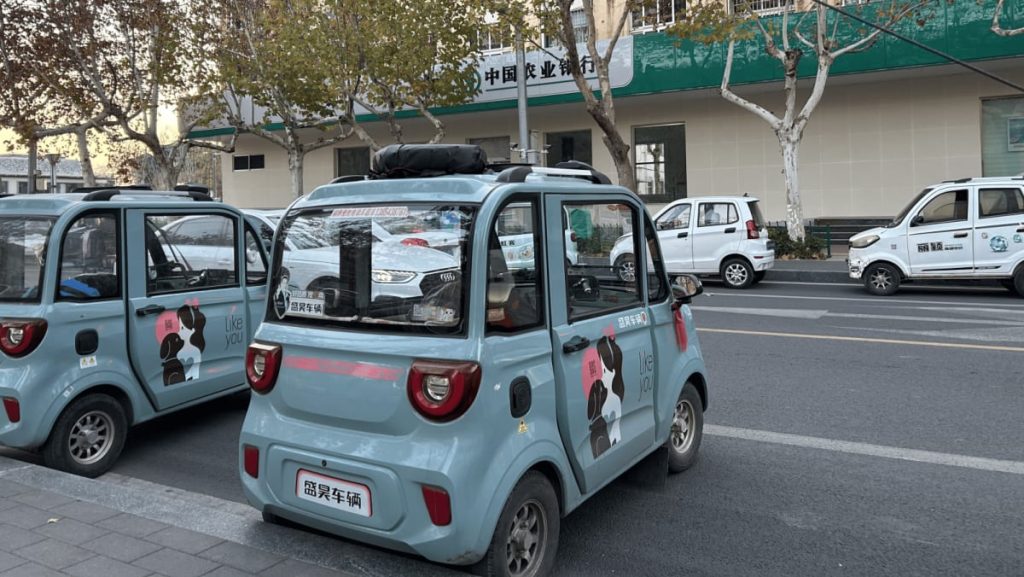Laotoule vehicles, low-speed electric vehicles prevalent in China, have become a double-edged sword for the elderly population. Initially embraced as an affordable and convenient mode of transportation, their unregulated nature and inherent safety deficiencies have transformed them into a significant public safety concern. Priced considerably lower than conventional vehicles and exempt from licensing and traffic regulations, laotoule filled a transportation gap for seniors, enabling mobility and independence. However, this regulatory vacuum fostered a disregard for traffic laws, contributing to a surge in accidents and fatalities. The vehicles’ popularity among the elderly, coupled with lax regulations, created a perfect storm of mobility and danger, leading to calls for stricter control and widespread bans.
The allure of laotoule vehicles stems from their affordability and ease of operation. Costing significantly less than cars or vans, they present an accessible option for seniors with limited budgets. Their compact size simplifies parking in congested urban areas, and the absence of licensing requirements eliminates bureaucratic hurdles. This streamlined access to personal transportation provides a newfound freedom for elderly individuals, allowing them to remain active and connected within their communities. However, this convenience comes at a steep price. The lack of standardized safety features, combined with a widespread disregard for traffic laws by drivers, has resulted in a tragic toll of accidents and fatalities.
The alarming frequency of accidents involving laotoule vehicles has prompted authorities to implement stricter regulations and, in some cases, outright bans. Between 2012 and 2016, nearly 20,000 fatalities nationwide were attributed to low-speed electric vehicle incidents. These stark statistics underscore the inherent dangers posed by these unregulated vehicles operating within complex traffic environments. The 2022 ban in Beijing, following over 100 fatalities, exemplifies the growing recognition of the urgent need to address the safety issues surrounding laotoule. Other cities and provinces are following suit, enacting crackdowns and phasing out these vehicles in an attempt to restore order and protect vulnerable road users.
The absence of licensing and registration requirements for laotoule drivers contributes significantly to the escalating safety concerns. Many operators lack formal training and exhibit a disregard for traffic rules, creating a hazardous environment for themselves and other road users. This lack of accountability exacerbates the problem, as drivers who flee accident scenes are difficult to apprehend and penalize. The unregulated nature of laotoule operation disrupts traffic flow, increases the risk of collisions, and undermines the overall safety of the road network. Experts emphasize the necessity of implementing licensing and registration procedures to ensure that drivers possess the requisite skills and knowledge to operate these vehicles safely and responsibly.
Beyond the behavioral aspects, the inherent design and construction of laotoule vehicles pose additional safety risks. These vehicles often lack essential safety features found in conventional automobiles, such as robust structural integrity and adequate occupant protection. In the event of a collision, these deficiencies can result in more severe injuries and fatalities. Substandard battery quality and inadequate charging infrastructure further contribute to the potential for fire hazards. The absence of a comprehensive insurance system complicates the aftermath of accidents, adding financial burdens to the already devastating consequences.
Despite the growing awareness of safety concerns and the increasing restrictions on their use, laotoule vehicles remain a lifeline for many elderly individuals who rely on them for essential transportation. The debate surrounding their regulation highlights the complex interplay between accessibility, affordability, and safety. While acknowledging the risks, some elderly users argue that giving up their laotoule would severely limit their mobility and independence. Finding a balance between ensuring public safety and preserving the mobility of the elderly population remains a significant challenge. Implementing comprehensive safety regulations, improving vehicle standards, and providing accessible alternatives are crucial steps towards mitigating the risks associated with laotoule vehicles while ensuring that the elderly can maintain their mobility and independence. The future of laotoule remains uncertain, caught between its vital role in elderly transportation and its undeniable contribution to road safety concerns.

